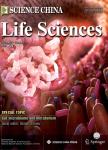Research of blastocyte-like structure in chicken
Research of blastocyte-like structure in chicken作者机构:1. College of Animal Science and Technology China Agricultural University 100094 Beijing China 2. Laboratory of Animal Genetics and Breeding Ministry of Agriculture 100094 Beijing China 3. State Key Laboratory of Agrobiotechnology 100094 Beijing China
出 版 物:《Science China(Life Sciences)》 (中国科学(生命科学英文版))
年 卷 期:2005年第48卷第5期
页 面:481-486页
学科分类:0905[农学-畜牧学] 09[农学] 090501[农学-动物遗传育种与繁殖]
基 金:This work was supported by the National Natural Science Foundation ofChina(Grant No.30471234)
主 题:BLS, blastocyst-like structure, embryonic stem cells, ES cells, chicken.
摘 要:The chicken embryo is a classic model used to investigate embryonic development, gene expression, and tissue differentiation, and is also an important research tool in studying the animal functional genomics. The whole blastoderms of fresh unincubated eggs from White Leg-horn chickens were collected with a paper ring, mechanically broken into small pieces and cul-tured in medium. Then the small pieces would develop into blastocyte-like structures (BLS), which could be facilitated by an addition of fetal bovine serum (FBS) to the primary culture and their diameter was nearly doubled from 12 to 24 h. The additional yolk had no positive effect on the development in the first 12 h but encouraged the BLSs attaching and inner cells differentiat-ing instead in 24 h. The inner cells of the BLS showing a high alkaline-phosphatase activity similar to those in mouse embryonic stem (ES) cells and also expressing a large amount of the specific stage embryonic antigen-1 (SSEA-1) on the surface, which was known to be the char-acteristic of non-differentiated mouse and avian ES cells, could finally differentiate into nerve-like cells, fibroblast cells and so on in the medium. Leukemia inhibitory factor (LIF) facilitated the cells’ proliferation and prevented differentiation in the suspended culture of the BLSs. So we drew the conclusion that the BLS obtained from broken blastoderm can be used to amplify avian ES cells so as to initiate a new method of producing transgenic chickens.



